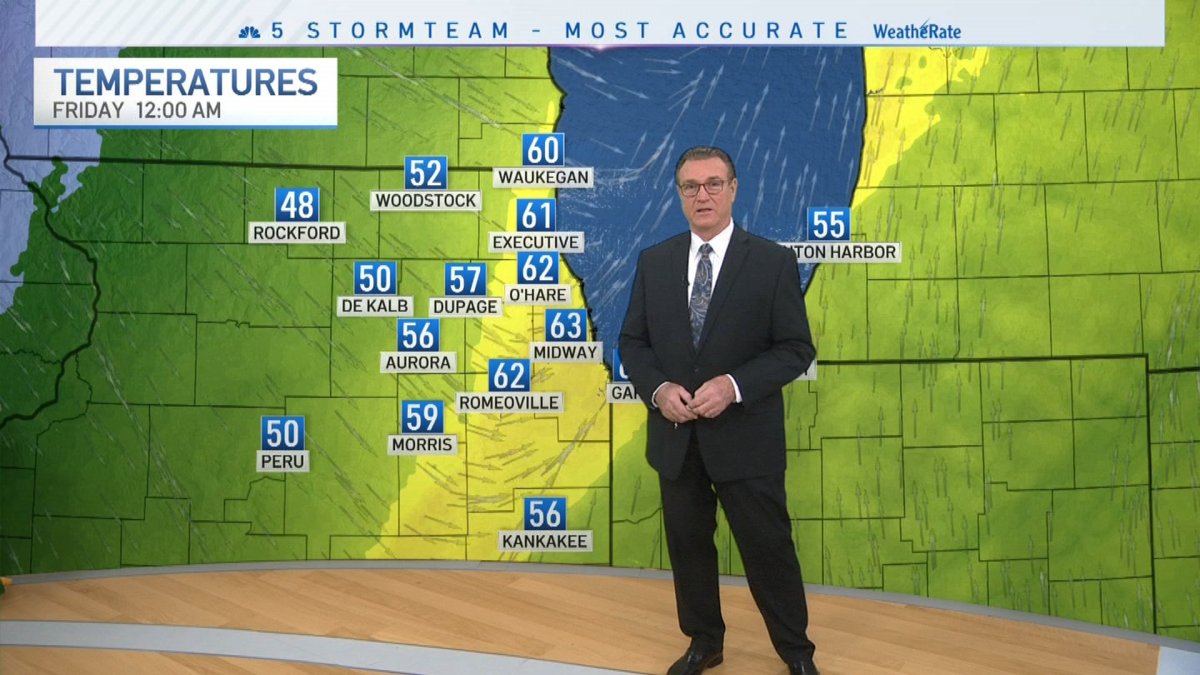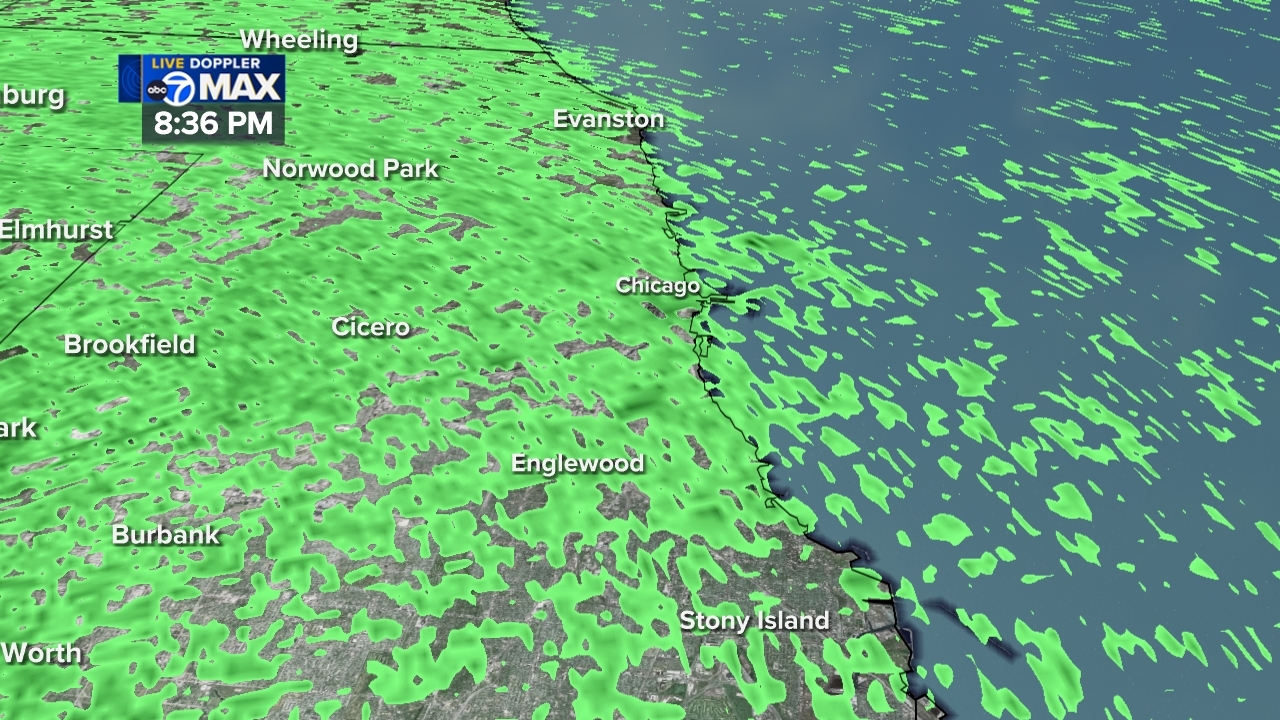Exploring Chicago's Diverse And Dynamic Weather Patterns
Chicago’s weather is a captivating topic of discussion among locals and visitors alike. Renowned for its dramatic temperature swings, the city’s climate can be both unpredictable and exhilarating. Whether you're planning a visit or simply want to understand what to expect, this guide will provide an in-depth analysis of Chicago's weather patterns, offering a season-by-season breakdown and practical tips to keep you prepared.
Chicago’s weather is as varied as its vibrant culture. From bitterly cold winters to steamy summers, the city experiences all four seasons with intensity. This diversity makes it crucial for both residents and tourists to stay informed about the local climate and adjust their plans accordingly.
In this article, we will explore the intricacies of Chicago’s weather, presenting a comprehensive guide that covers historical weather patterns, current trends, and actionable advice. By the end of this piece, you'll have a thorough understanding of what to anticipate and how to best prepare for the ever-evolving climate of Chicago.
Read also:The Enduring Legacy Of Dynamo Vs El Salvador A Tale Of Football And Culture
Table of Contents
- Introduction
- Chicago Climate Overview
- Seasonal Breakdown of Chicago Weather
- Winter Weather in Chicago
- Spring Weather in Chicago
- Summer Weather in Chicago
- Fall Weather in Chicago
- Extreme Weather in Chicago
- How to Prepare for Chicago Weather
- Understanding Chicago Weather Forecasts
- Resources for Staying Updated on Chicago Weather
- Conclusion
Overview of Chicago's Climate
Chicago’s climate is classified as humid continental, featuring four distinct seasons. The city is known for its hot, humid summers and cold, snowy winters, with spring and fall acting as transitional periods marked by mild temperatures and occasional storms. Gaining insight into Chicago’s general climate is essential for planning outdoor activities, travel, and daily routines.
Historically, Chicago has witnessed significant weather events, such as the infamous Blizzard of 1979 and the Heat Wave of 1995. These events underscore the necessity of being prepared for extreme weather conditions.
Key Climate Characteristics
- Hot summers where temperatures frequently exceed 90°F (32°C).
- Cold winters with temperatures regularly falling below freezing.
- High humidity levels during the summer months, making the heat feel more intense.
- Substantial snowfall during the winter, averaging around 35 inches annually.
Detailed Seasonal Breakdown of Chicago Weather
Chicago’s weather varies considerably throughout the year, making it vital to understand the distinct characteristics of each season.
Navigating Chicago's Harsh Winters
Chicago winters are legendary for their harsh conditions. Temperatures often drop well below freezing, and snowfall is a frequent occurrence. The city typically receives around 35 inches of snow annually, with January being the coldest month. According to the National Oceanic and Atmospheric Administration (NOAA), the average winter temperature in Chicago is approximately 28°F (-2°C). Both residents and visitors must prepare for the cold by wearing suitable clothing and utilizing heating systems efficiently.
Embracing the Renewal of Spring in Chicago
Spring in Chicago offers a refreshing break from the cold winter months. Temperatures gradually rise, with April and May providing mild weather ideal for outdoor activities. However, spring is also a time of unpredictable weather, including thunderstorms and occasional tornadoes. The average spring temperature in Chicago ranges from 40°F (4°C) to 60°F (15°C). This transitional period is perfect for exploring the city’s parks and gardens, which come alive with blooming flowers and lush greenery.
Thriving in Chicago's Hot and Humid Summers
Chicago summers are characterized by heat and humidity, with temperatures often reaching 90°F (32°C) or higher. July is typically the warmest month, making it a popular time for festivals and outdoor events. The city's lakefront offers a cooling breeze, making it a favorite spot for residents and tourists alike. Staying hydrated and protecting yourself from the sun is crucial during the summer months, as high humidity levels can intensify the heat. Air conditioning becomes a necessity for comfort.
Read also:Experience The Vibrancy Of Chicagos Dynamic Weather
Celebrating the Beauty of Fall in Chicago
Fall in Chicago is a beloved season, offering mild temperatures and breathtaking foliage. September and October provide comfortable weather, with temperatures ranging from 50°F (10°C) to 70°F (21°C). This is an excellent time to enjoy outdoor activities, such as visiting nearby pumpkin patches and apple orchards. As November approaches, temperatures begin to drop, signaling the approach of winter. Preparing for colder weather by layering clothing and ensuring your home is ready for the changing season is advisable.
Chicago's Experience with Extreme Weather
Throughout its history, Chicago has endured several extreme weather events that have shaped the city’s infrastructure and emergency preparedness. The Blizzard of 1979 remains one of the most memorable snowstorms, with snowfall totaling 20 inches and wind gusts reaching 50 mph. More recently, the Polar Vortex of 2019 brought record-breaking cold temperatures, with wind chills plummeting to -50°F (-46°C). On the other end of the spectrum, the Heat Wave of 1995 highlighted the dangers of extreme heat, with temperatures soaring above 100°F (38°C) for several days. These events emphasize the importance of having contingency plans in place for both cold and hot weather extremes.
Preparing for Extreme Weather Conditions
- Assemble an emergency kit containing essentials such as food, water, and first aid supplies.
- Stay informed through local news and weather alerts to remain aware of potential severe weather.
- Ensure your home is properly insulated and equipped with functional heating and cooling systems.
- Have a plan in place for power outages and other emergencies, including communication strategies with family and friends.
Strategies for Staying Prepared for Chicago's Weather
Being prepared for Chicago’s ever-changing weather is essential for enjoying the city year-round. Whether you're a resident or a visitor, taking proactive measures can significantly enhance your comfort and safety.
Invest in high-quality outerwear, including waterproof boots, gloves, and a warm coat for the winter months. During the summer, prioritize lightweight, breathable clothing and sun protection. Always check the weather forecast before heading out and adjust your plans accordingly to avoid any unpleasant surprises.
Seasonal Preparation Tips
- Winter: Stock up on de-icing supplies and ensure your car is equipped with snow tires to navigate icy roads safely.
- Spring: Keep an umbrella handy and be prepared for sudden rain showers, as spring weather can be unpredictable.
- Summer: Stay hydrated and seek shade during peak sun hours to avoid heat exhaustion and sunburn.
- Fall: Layer your clothing to adapt to fluctuating temperatures throughout the day, ensuring comfort as the weather transitions.
Understanding Chicago Weather Forecasts
Weather forecasts are indispensable tools for planning your day in Chicago. Familiarizing yourself with the terminology and symbols used in forecasts can help you make informed decisions about your activities.
Local news stations and online platforms provide up-to-date weather information, including temperature predictions, precipitation chances, and wind speeds. Pay close attention to special alerts, such as winter storm warnings or heat advisories, which indicate potential severe weather conditions. These alerts can help you prepare for any adverse weather that may impact your plans.
Common Weather Forecast Terms
- Partly Cloudy: Expect a mix of sunshine and clouds, allowing for pleasant outdoor activities.
- Chance of Rain: Indicates a possibility of precipitation, often expressed as a percentage, helping you decide whether to carry an umbrella.
- Wind Chill: Measures how cold it feels due to wind speed, emphasizing the importance of bundling up in winter.
- Heat Index: Reflects how hot it feels due to humidity levels, reminding you to stay hydrated in summer.
Accessing Resources for Staying Updated on Chicago Weather
Several resources are available to help you stay informed about Chicago’s weather. From mobile apps to websites, these tools provide real-time updates and detailed forecasts, ensuring you’re always prepared.
Some popular options include the Weather Channel app, AccuWeather, and local news station websites. Additionally, the National Weather Service offers comprehensive reports and alerts specific to the Chicago area, keeping you updated on any potential weather threats.
Recommended Weather Apps
- The Weather Channel: Offers personalized forecasts and severe weather alerts, ensuring you’re always prepared for changing conditions.
- AccuWeather: Provides accurate and detailed weather information, helping you plan your day with confidence.
- NOAA Weather Radio: Delivers emergency alerts and weather updates, keeping you informed even in areas with limited connectivity.
Final Thoughts on Chicago's Weather
Chicago’s weather is a dynamic and ever-changing aspect of life in the city. From the icy winters to the scorching summers, each season brings its own set of challenges and opportunities. By understanding the climate and preparing accordingly, you can fully embrace and enjoy all that Chicago has to offer.
We invite you to share your thoughts and experiences in the comments section below. Additionally, feel free to explore our other articles for more insights into Chicago’s culture, attractions, and lifestyle. Stay informed, stay prepared, and relish the beauty of Chicago’s weather in all its forms!

